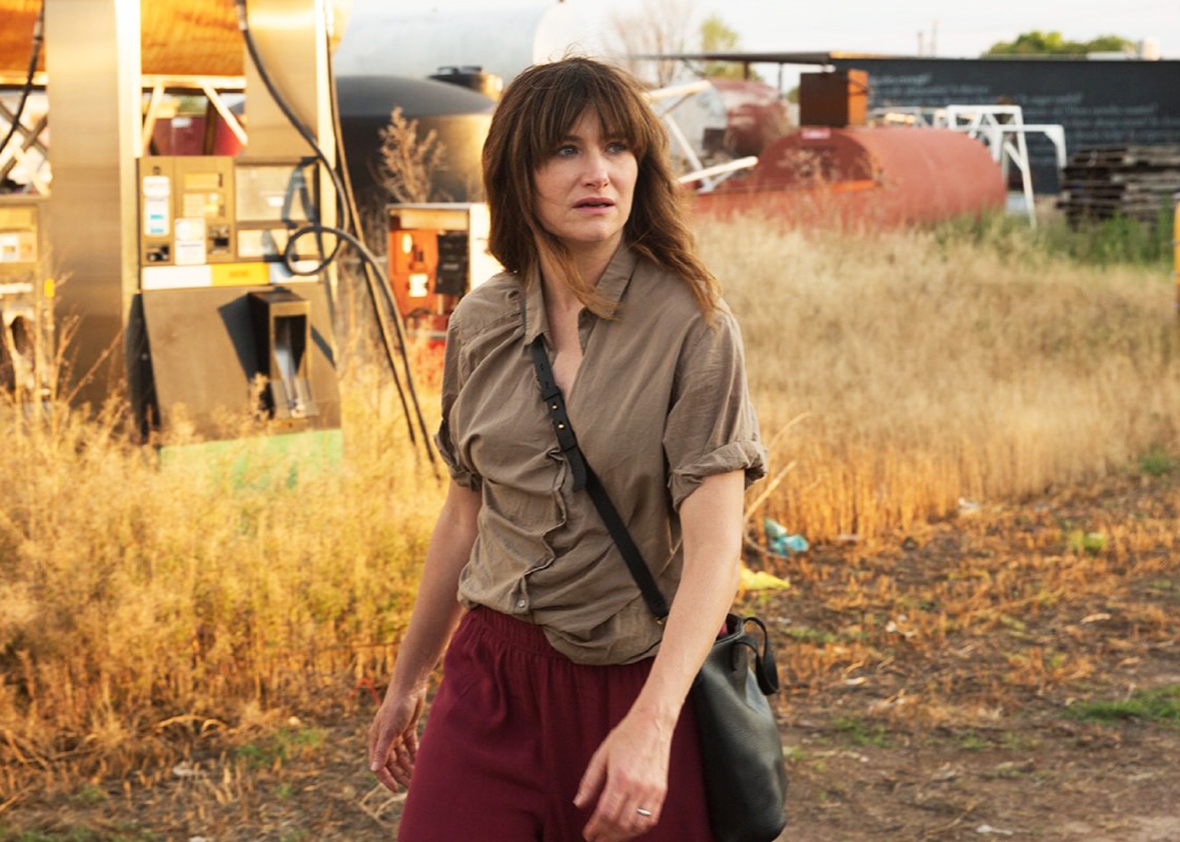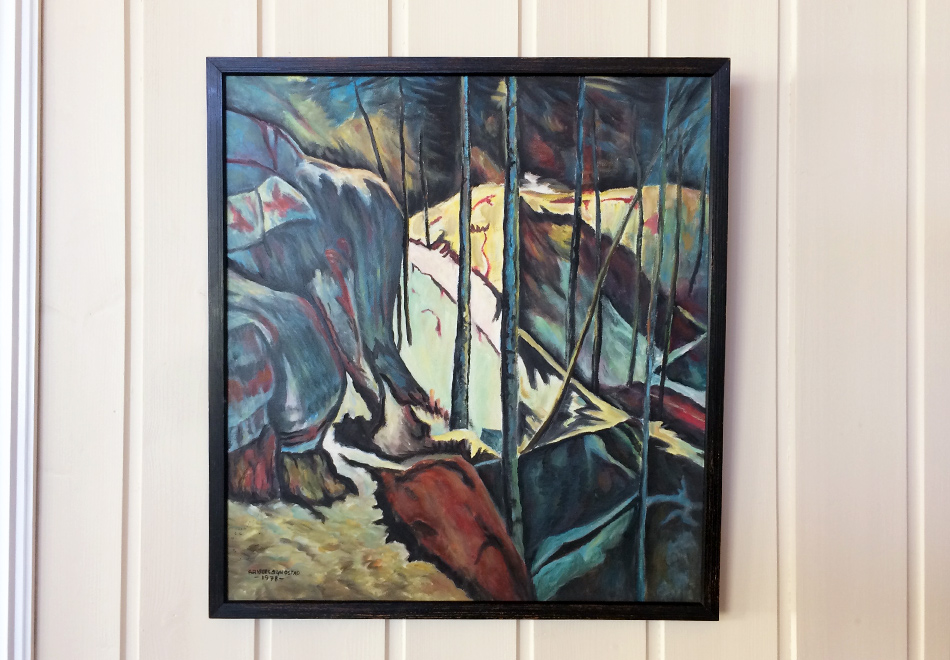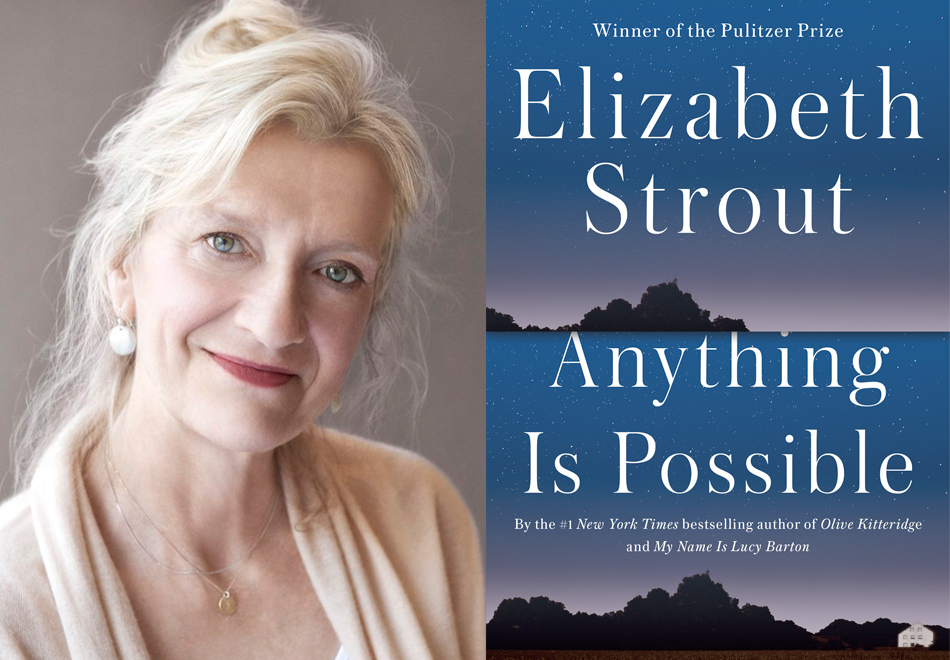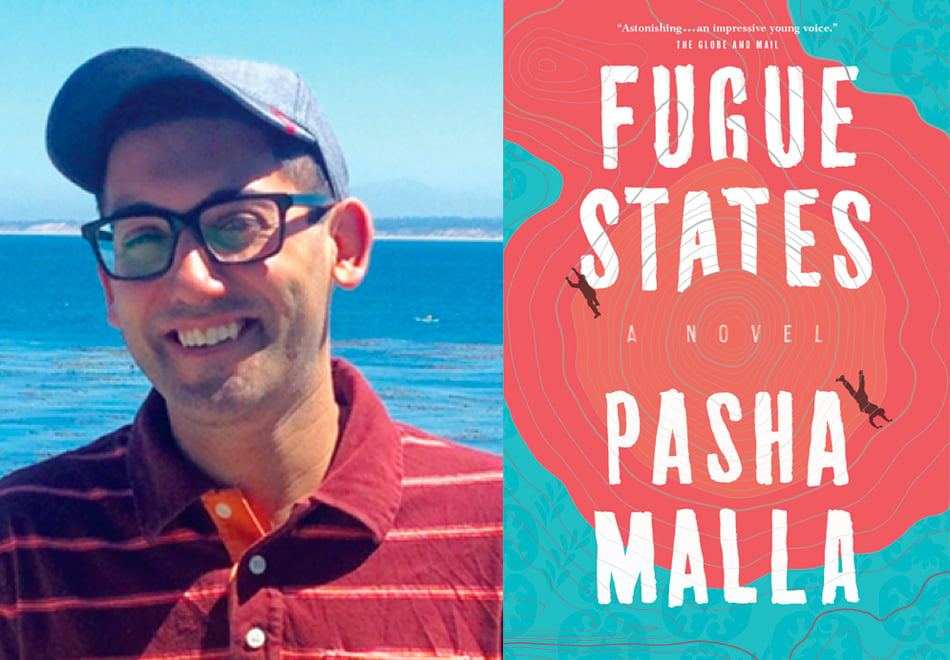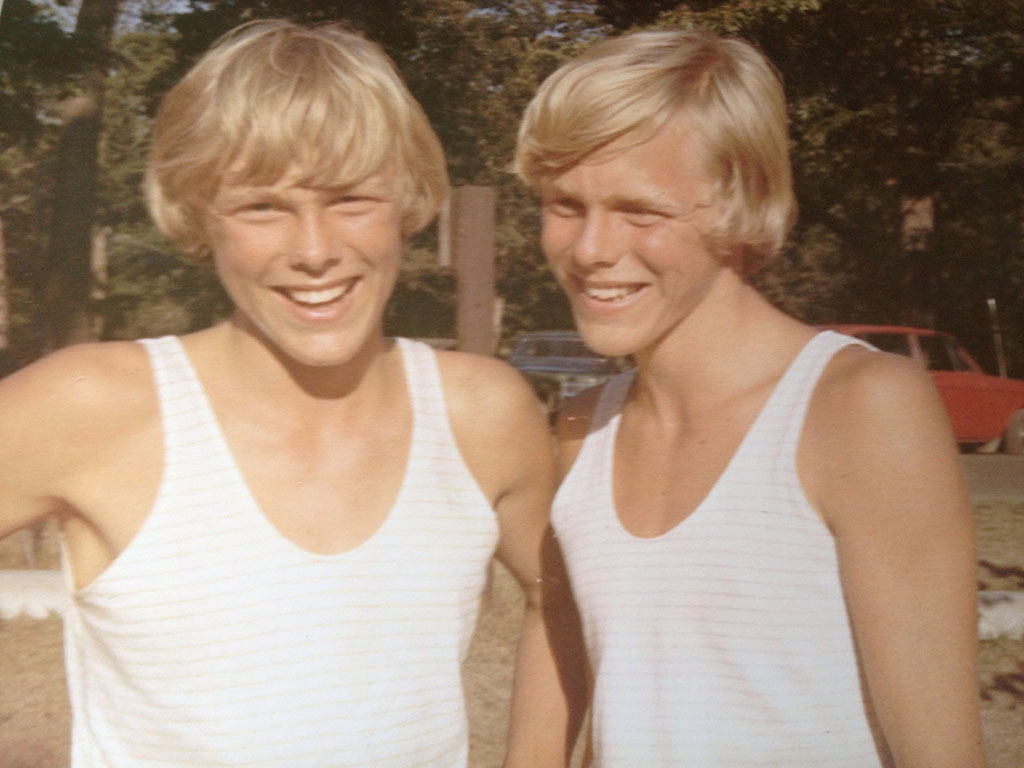![]()
Charlotte Rampling, 1973, nude, sits atop a wooden table at the Grand Hotel Nord-Pinus in Arles in the room in which matadors once dressed for battle. Legs ajar, wine in hand, body turned away, she squares her unsmiling eyes with the camera (and Helmut Newton behind it), as if to say: “This is not for you.”
To Sofia Coppola, this is what it means to be a woman. As a girl raised in Napa on a rambling ranch, her world-famous father travelling the planet, her mother alongside him, this girl, the one who has always been defined by her style before anything else, considered fashion magazines her “link to the rest of the world.” She covered her walls in their images—mostly thin, mostly beautiful, mostly rich white women. The photo of Rampling came from a 1974 issue of Vogue. Sofia wrote about it for the magazine in 2003 and kept it into her 30s; deep into womanhood, she was still reminding herself who she wanted to be. Even today, more than a decade later—with six films behind her and two children in front—we still sense that photo watching over her, still sense her incipience. “Is she an eternal adolescent because she’s always primarily read as her father’s daughter?” asks Fiona Handyside, author of Sofia Coppola: A Cinema of Girlhood. If she is, her heroines come by it naturally. The Virgin Suicides, Lost in Translation, Marie Antoinette, Somewhere, The Bling Ring and her most recent film, the Cannes-lauded Beguiled, are all coming of age tales featuring young, privileged white women—pre-adolescents, actual adolescents, delayed adolescents—none of whom ever really come of age. To Coppola, the image of Rampling is, after all, just that, an image, the ideal that can never square with reality. “Girls are seen as really special and exciting and full of potential,” Handyside says of Sofia’s cinema, “womanhood is this thing that closes that down. So why would you want to grow up?”
*
To hear Eleanor Coppola tell it, her daughter was a typical adolescent who denigrated her mother and deified her friends. Sofia has said herself that she was “a little too cool to be a teenager,” that she wanted to grow up, felt more suited to adulthood. When she wasn’t traveling with her family, her youth was occasionally caught on film. In her first pubescent role—Tim Burton’s 1984 monochromatic short Frankenweenie—she is a gangly pseudo-teen credited as “Domino,” who wears a long, blond obvious wig, a bow and a gingham dress—the platonic ideal of the American girl. She is also the only girl, a Dorothy type surrounded by munchkin boys, who exercises side by side with her Barbie doll (Barbie, naturally, being her one female friend). Two years later, 15-year-old Coppola acted through braces in Peggy Sue Got Married as the girl scout sister of Kathleen Turner. “Teenagers are weird and you’re the weirdest,” she says, her lackadaisical delivery already secured in place.
Around this time, according to her mother, Sofia became a fixture at her friends’ homes, claiming her own no “fun.” This teenage rebellion culminated in her flying off to Paris at 15 to intern at Chanel over two summers. “Every inch of her wants to break out of an ordinary routine,” Eleanor wrote in her diary. And she did. That same year, Sofia abruptly stopped being a teenager, though not of her own volition. Twelve days after her birthday, her oldest brother, Gian-Carlo (“Gio”), died unexpectedly at the age of 22 in a boating accident. “[W]hen my brother died, my teenage years got interrupted,” Sofia told The Hollywood Reporter. Later, when the family was organizing Gio’s things, Sofia slid into his white silk jacket. “It smells like him,” she said.
A little while after that a dude named Dave Markey became a sort of surrogate older brother to Sofia. Three years before he became known as the director of The Year Punk Broke, Markey was an underground filmmaker. When they met through mutual friends in the late ’80s, Sofia was a fan of his low budget teen-girl-runaway-rock-band extravaganza Lovedolls Superstar, which featured early-days Sonic Youth. “She had already seen some of my work and was really into it so it was very flattering for me at the time,” says Markey, whose band stayed at the Coppola ranch. Sofia looked up to Markey, who was in his mid-20s, and he turned her onto “psychotropic cinema,” escorting her to Laemmle’s Monica Premiere Showcase (as it was then known) in Los Angeles to see Carnival of Souls. Herk Harvey’s only film, a goth-cult horror from 1962, is about a beautiful blond organist who exists in a sort of post-car-accident limbo—“I had no place in the world, no part of the life around me,” she says—and is drawn to an abandoned amusement park. “I remember that left a really big impression on her,” says Markey. “She was really blown away by that film.”
But several months later Sofia had no time for rep cinema. At that point, she was handed the biggest responsibility of her life so far: taking Winona Ryder’s place. Her father, Francis Ford Coppola, by then a well established New Hollywood force having helmed the mobstalgic Godfather franchise, had based the role of Mary—mafia alum Michael Corleone’s (Al Pacino) daughter—on Sofia. So when Ryder, who had already headlined several films, fell ill, Sofia was the obvious understudy, despite having never actually studied acting. In her first scene in The Godfather Part III, sitting in a pew with a scarf on her head, an enigmatic smile on her face, Sofia looks every drop the Virgin Mary. But internally she suffered from a severe case of impostor syndrome and overworked herself to the point of tears. Sofia knew she was not welcome. A Paramount executive disputed her casting, the other actors did too, and people advised Eleanor she was abusing her child. Mary folded under the pressure. In the film, Sofia’s delivery is flat, almost bored, her lines overlapping those of others, her weak presence only underscored by the power of Pacino’s. After Mary is fatally shot, she falls to her knees and says, “Dad?” It ended up being a metaphor—she trusted her father and the critics killed her for it.
That same year, 1990, Sofia appeared in Markey’s music video for Sonic Youth’s “Mildred Pierce.” He shot her on Super 8 in front of Hollywood’s Max Factor building one afternoon after she designed her own costume and applied her own makeup—thick brows, black lips, Chanel—her exaggerated wide-eyed sneer reminiscent of Cry Baby’s Hatchet-Face. “I just had the concept to dress up Sofia as Joan Crawford in Mommie Dearest,” Markey says. “So she’s actually channelling Faye Dunaway.” Around that time Sofia also befriended Sonic Youth bassist Kim Gordon, whose fashion label, X-Girl, she would soon join. “Kim inspired me because she tried all the things that interested her,” she told Elle. “She just did what she was into.” As for herself, Sofia wasn’t sure what she was into. It was an embarrassment of riches. Fashion, maybe? She was in charge of the outfits on a film called The Spirit of ‘76 and at one point considered studying costume design. “She was really into that,” says Markey. But a year later Sofia was onto a third college and other interests. “I want to take photography and painting and learn more skills,” she told her mother. So she studied art history and co-founded a clothing company, Milk Fed, in Japan. “I became a dilettante,” she told The New York Times.“I wanted to do something creative, but I didn’t know what it would be.”
The one thing Sofia didn’t study was film—she figured she could ask her dad anything—and it wasn’t until her late twenties that she started talking about directing. “I’m gonna make a movie, it’s gonna be fun, I’m so excited,” Markey remembers her saying. The movie was Lick the Star (1998) and it lasted no more than 15 minutes, but it would become the prototype for her entire oeuvre. Co-written by best friend Stephanie Hayman, this black-and-white sliver of Heathers-style precociousness sees a bunch of high schoolers poisoning their male harassers (the title inverts their motto, Kill the Rats). “Everything changes, nothing changes, the tables turn and life goes on,” the queen bee scrawls on a scrap of loose leaf and sticks into An American Biography. Adolescent torpor, slo-mo saturnalia, gendered spaces, in her first film Sofia had already hinted at what would become her signature tropes. “Movies incorporated all the things I liked,” she told W. “It was the first time I felt like something clicked professionally for me.”
*
A redhead lies on her back in the grass, her arms outstretched like an exhausted Christ, orange hair matching the orange in the sun-soaked green, the blossoms on her borrowed dress nestled in the ground. Barely clutching a camera in her left hand, the girl’s right arm reaches out of frame, perhaps searching for something to hold onto. She is in a sort of rapture. She smiles, maybe.
William Eggleston’s 1975 image of a young woman on Quaaludes was one of the many works of the time—alongside Bill Owens’ Suburbia and Sam Haskins’ Playboy portraits—that inspired Sofia Coppola’s first feature. From the beginning, she used a mood board to set the stage, which is why her films, if nothing else, are as eternally moody as a prom at midnight. Her 1999 adaptation of Jeffrey Eugenides’s The Virgin Suicides languidly embraced a quintet of teen sisters from suburbia whose burgeoning sexuality is stifled by their Catholic parents’ clapboard take on gothic seclusion.
Born in 1971, Sofia’s aesthetic is largely nostalgic for the decade of her prepubescence, so it follows that her first film would be set in the same era. She understood the Virgin Suicides’ feeling of alienation and loss—of time, of innocence, of relationships—having felt the same way in her nomadic youth. “I liked that the story seemed to capture what it was like to be that age,” she told Interview,“something that I haven’t seen many people get right.” Coppola captured the impulsive guilelessness of adolescence by hiring non-actors she found on the streets of her Toronto set, directing one of the neighborhood boys in the film to dine with the Lisbons for the first time, for the first scene, script free. Writes producer Julie Costanzo, via email, “she opted for him to experience the bewilderment and discomfort.”
For Lux Lisbon, however, the sister who is ardently pursued by the local rake and then just as coolly dropped, Coppola chose a professional. Kirsten Dunst, around 17 at the time, was picked for her liminality—“She’s really a kid,” said Coppola in Combustible Celluloid in 2000, “but she’s also womanly”—thus began the director’s trend of casting white (often blond) former child starlets. Dunst was followed by Scarlett Johansson was followed by Elle Fanning was followed by Emma Watson, all actresses who, despite their advancing ages, eternally invoke youth. Sofia based the look of the girls on her childhood best friend’s sister, Leslie Hayman, the freckled towhead she eventually cast as sibling Therese. “[W]hen I was in high school, the pretty girls were blonde and perfect,” Sofia said. “Those were the girls the guys were after.” She was not one of them. Even Coppola’s own mother wrote of her, “She is beautiful in an imperfect way.” Having broken her nose in junior high during a ball game, Sofia remembers appreciating Anjelica Huston’s promise that she would grow into it. The advice was particularly stark coming from the fellow daughter of a famous director (John Huston) who had an equally miserable first experience working with her father.
While the male gaze defines Eugenides’s Virgin Suicides, in Coppola’s film the girls exist beyond it. As such, she explores the “imprisonment of being a girl” but also its potency. “I really loved how the boys were looking at the girls and the girls had this kind of power and mystique over them,” Coppola told Rookie, “and I was interested in how girls could get stuck in lives that were too small for them.” In the Lisbons’ presence, the boys are virtually emasculated, mere subjects in the girls’ home, under their spell even in their own car. Not even Trip Fontaine (Josh Hartnett), the magic man, has command over the younger Lux, who unbeknownst to him has his name branded on her underwear (he is already where he wants to be but only she knows it). “I often thought of Sofia’s style and assuredness as more about identifying the absence of what was transpiring in a scene, rather than the presence,” says producer Julie Costanzo. So Lux owns Trip, until he owns her, disappearing while she slumbers post-coitally, the guy who is objectified refusing to be, as the girls joke, “They’re just going to raffle us off.” But they refuse too. By killing themselves, the Lisbons reject their restricted lives. “What do girls have? Well, they have their bodies,” says Handyside. “That’s [their] weapon, that’s the thing that [they] can possibly use or indeed withdraw.”
Sofia Coppola might have withdrawn herself had the press responded to The Virgin Suicides as they had to The Godfather Part III, but after a warm reception at Cannes, she was reborn. The 28-year-old director was no longer merely Francis Ford Coppola’s daughter, she was an individual. Emboldened by the response in France, she turned further inward for her next film.
Lost in Translation was, of course, about loss, too, but of a different kind. A young married philosophy grad finds herself aimlessly wandering the halls of Tokyo’s Park Hyatt, crying long distance to a “friend” back home who doesn’t seem to hear, her absentee husband equally oblivious. When she first visited Japan, Coppola told The New York Times, she “felt like teenage girls were running the whole country,” which makes it an apt setting for a delayed adolescent like Charlotte (Scarlett Johansson was in fact only 17 during filming). The overgrown, subdued Eloise soon comes across a famous actor (Bob, played by Bill Murray) in the midst of his own midlife crisis. They karaoke, party, sushi, watch late night movies. “I just don’t know what I’m supposed to be,” she tells him, before he tells his own wife, “I’m completely lost.” The first time they see each other, in an elevator packed with locals, Charlotte and Bob catch each other’s eye and share a smile—they are each other’s compass. “To me that’s like the most comforting or best thing in life,” Coppola told The Guardian, “when you have a little connection or you both find something funny, and it makes you feel not alone.”
Though the press speculated about how autobiographical the film actually was, Coppola responded in Filmmaker, “There’s a part of me in that character.” The truth is, for a long time she was as lost as Charlotte. It is thus unsurprising that her most autobiographical work would be vocal about its search for personhood, a leitmotif that permeates all of her films (without, however, the oft-associated finding of it). “I always like characters who are in the midst of a transition and trying to find their place in the world and their identity,” she told Rookie. This was the all-encompassing theme of her life for about a decade, when she was afraid that, like Somewhere’s Johnny Marco, she would end up a nothing, a nobody—it’s a fear she reflects on screen over and over again. “To me, the films are about how everyone has to decide how they want to live their life,” she told the Boston Phoenix, “as opposed to how they’re supposed to.” Supposed to. For young women the expectation becomes even more loaded. And Marie Antoinette is the biggest supposed to of all.
Based on Antonia Fraser’s biography of Madame Deficit, Sofia Coppola’s Marie Antoinette follows the Austrian dauphine from the age of 14, when she is sent to France to become queen at a time when she knows more about pugs than politics, to the French Revolution. The director told Vanity Fair she could identify with the 18th century royal, “coming from a strong family and fighting for her identity.” The moment Sofia was born, bestowed upon her was what Handyside refers to as “a simultaneous burden and privilege.” Barely out of the womb, she was cast as a baby boy in The Godfather, cast, in a sense, as heir to the Coppola dynasty both on screen and off. The way her image was co-opted by her family, Antoinette’s was by Versailles (though at least Sofia’s uterus remained her own). “I think there is a sense in which she is debating her own past,” says Handyside of Sofia’s films, “and the way she was commandeered as image.” Each of her heroines are found in a role they have not really chosen, the confines of their lives symbolised by their entrapment within houses, hotels, schools, castles. “I think there’s an element of the female experience that you have certain boundaries,” Coppola recently told Film School Rejects. But her mother thinks it might be more personal. “Perhaps Sofia is part of all these women,” Eleanor wrote in her diary. “Growing up she was in a way a princess in Francis’s kingdom. On his sets she was treated as the adored daughter of the boss, a child of a celebrity. She was not seen as a thinking, feeling person with her own identity and acute perceptions.”
As an adult, Sofia erects gothic edifices within the construction site of contemporary feminism. Her films interrogate a reality in which women are told they are equal, yet know they are not. Without an alternative, says Handyside, “you repeatedly get these fantasies as the answer.” The moments of acedia in her films—on pillows, in grass, on each other—the confetti-fuelled fetes, the forlorn looks out of fishbowl windows, the sly winks that shatter the fourth wall, the floaty sojourns—Petit Trianon, underwater tea, travel snaps—all luxuriate within the bounds of femininity. As Handyside puts it, “it’s just killing time,” a suspended reality as you yourself are slowly killed. In Modernism, Feminism, and the Culture of Boredom, Allison Pease writes that modern literary depictions of boredom are “an acknowledgment of the profound dissatisfaction of a group of people who found themselves on the wrong side of agency, interest, and meaning.” Sofia’s “girliest film set” thus focusses on Antoinette’s teen years—“the earlier, fun days,” according to the director—icing the merry monotony in a “cookies and cake” palette. “You’re considered superficial and silly if you’re interested in fashion,” Sofia told Vogue.“But I think you can be substantial and still be interested in frivolity.” Frivolity itself speaks volumes, Antoinette’s tight corsets, for instance, are tight for a reason—privilege means more even when you want less. Though the Queen of Versailles is the quintessential symbol of white privilege, Sofia believed she deserved as much of a voice as she did, particularly considering the din of public perception. Hence the scene in which Marie Antoinette is appalled by the rumour (which persists to this day) that she scoffed at the poor, “Let them eat cake.” Handyside believes Sofia is drawn to ostensibly unsympathetic women like Antoinette and the girls of the Bling Ring because, regardless of their means, “we’re all in a culture which doesn’t have answers” for women.
Spent after Marie Antoinette, Sofia took time off to bring up her first child. It was her daughter who inspired her to write her second original screenplay, Somewhere, about a prominent actor, Johnny Marco (Stephen Dorff), and his relationship—or non-relationship—with his 11-year-old daughter Cleo (Elle Fanning). This is Sofia’s first male hero, but, aside from his gender, he is not so different from her heroines. Sure, he objectifies women—“[Sofia] has a lot of sympathy for male foibles,” says Handyside—but he feels as lost as his predecessors, once again within a rambling palace (in this case, the crumbling decadence of the Chateau Marmont). Johnny bides his vague time falling asleep on the women he is with, texting the ones he is not, otherwise sitting constricted in a plaster mask recalling Antoinette’s girdles and crying on the phone like Charlotte to an unsympathetic listener. “I’m fucking nothing,” he says. “I’m not even a person.” His future, like everyone else’s, is unclear as he leaves his car behind in the middle of nowhere and yells to his daughter under the chop-chop-chop of a helicopter, “Sorry I haven’t been around.” But his words are only for show. Only the audience hears them—they are not for her. This as opposed to the final confidence shared between Lost in Translation’s Bob and Charlotte, which we are not privy to, but which somehow equips Charlotte to face the future. In Cleo’s case, there is no roadmap, she is as lost as Charlotte was.
Coppola designed Cleo as “a kid in this grown-up world” who in the end is as adrift as her father, crying over her absentee mother, abandoned by both of them. Her happiness can only fluorish in the interim, prior to this epiphany, within the ignorance of innocence, “where being a girl is wonderful and it buys you this space of transcendence and evasion from adult problems…but the price is that you’re never allowed to grow up,” says Handyside. There is nothing worth knowing beyond this, the end being the refusal to continue—to die, to walk away, to be escorted off the premises. “I think the feminism in the films,” Handyside adds, “is precisely that there is a refusal of what womanhood means.” The way her father is nostalgic for the old country, Sofia is nostalgic for youth—an idealized sanitized notion of youth, anyway—in which you don’t have to know who you are, decisions don’t yet have to be made, and there are only feelings and experiences and being. This is why she always chooses the girl’s potential—an eternal becoming—over the woman’s reality. Because how do you commit to adulthood when you don’t know where you stand?
Coppola wasn’t planning on another film about kids. But then along came the Bling Ring, a group of privileged California youths who burgled celebrity homes in 2008 and 2009 and stole about $3 million worth of possessions. As Coppola told Indiewire,“there’s kind of just the universal teenagers getting in trouble and wanting to be part of a group—that part I could totally relate to.” This film parts ways with the rest by depicting adolescents who are not trying to get out, but instead trying to break in. Versailles is what they want, that sparkling assembly line of shoes and clothes and money. Their homes are a uniform affluent fawn—a peach-hued image of Calabasas the inspiration—but the ones they breech are rich in technicolour. “We had so many beautiful gorgeous things,” says the character Marc in the film.
The Bling Ring was a comedown after Somewhere, which had won the Golden Lion at Venice. The film was particularly criticized for erasing Diana Tamayo, a Mexican immigrant who did not have U.S. citizenship and was threatened with deportation over her involvement in the Ring. Though Tamayo was reportedly small enough to get through the doggie doors of celebrity homes, in the film it’s the character Nicki’s sister (Georgia Rock) who accesses Megan Fox’s abode this way—Tamayo, and the fact that her conviction could have lead to her expulsion from the country, did not appear on screen. Korean-American Katie Chang, who played the character of Rebecca Ahn in the film, based on the real-life Rachel Lee, remains the rare exception in Coppola’s parade of pale patrician faces. “I think Coppola seems to be suggesting, you don’t have to necessarily be white, but being white really helps,” says Handyside. It certainly hasn’t hurt her. As a teen, Coppola had thick dark eyebrows, a long mahogany mane and a pronounced nose, but as she got older, her hair got progressively lighter and shorter, her eyebrows thinner, her makeup and clothes more discreet. “If you think about Italianness, it’s associated with excess, with sexiness,” says Handyside. “She’s almost reinvented herself as a wasp.” Sofia is not Versace, she is Marc Jacobs, and her characters follow suit, often dressed in powder blue, often blanched out to make them even more alabaster than they are, the kind of women who Helmut Netwon might have photographed had they been old enough to qualify.
Those who do not pass, do not make the cut. The Beguiled is the latest example. The second adaptation of Thomas P. Cullinan’s Southern Gothic novel unravels during the Civil War at an all-girls boarding school that is disrupted by the arrival of a wounded soldier. The plot is largely preserved, the convalescent, McBurney (Colin Farrell), seducing three women—Nicole Kidman’s commanding head mistress, Kirsten Dunst’s shy teacher, Elle Fanning’s student temptress—who choose not to fight amongst themselves, but to unite against the sybarite. In so doing, the controlled, civilized, quiet confines of their school erupt into a chaotic, barbaric mess of carnage. “Control, civilization, quietness, they’re about femininity,” says Handyside, “they’re also about very strict classical WASP norms of femininity.” The operative word being WASP.
Sofia’s Beguiled excises the shrewdest character in Cullinan’s story—the school’s slave, Mattie (played arrestingly by blues singer Mae Mercer as Hallie in the 1971 adaptation)—with the film’s only nod to the Civil War’s racial foundation reduced to “the slaves left.” Coppola has said in several interviews that her focus was specifically on the power dynamics between men and women. She told The Hollywood Reporter that she wrote Mattie out, “because I didn’t want to treat that subject lightly,” adding more recently to BuzzFeed that Mattie’s was “a really interesting story, but it’s a whole other story.”9
Presumably that is also why she turned the book’s biracial teacher, Edwina, into Kirsten Dunst. But Edwina’s whitewashing is particularly puzzling considering her background would have been perfectly positioned within Coppola’s oeuvre-wide theme of identity. In Cullinan’s novel, Mattie surmises that the reason Edwina is so isolated from the rest of the school is “because she don’t know who she is—she don’t know what she is.” In the film, we are meant to believe that it is simply Edwina’s oppressive timidity that has separated her from the faces that look exactly like hers. But you can’t help hearing the strains of Beyonce’s “Sorry” when you see Fanning on Instagram recreating a scene from Lemonade—The Beguiled shot on the same Louisiana plantation—casting herself as Beyonce and Dunst as Serena Williams, both of these white actresses clothed in antebellum cotton.
*
Sofia Coppola, 2017, sits on a winding staircase surrounded by femininity, pre-pubescent to middle aged. Drenched in light, dressed in pale ruffled ankle-length frocks, frozen in place, the seven girls and women around her gaze out from their cramped quarters with various conflicting expressions. The director, 45, is in the middle, white shirt, black pants, white runners, androgynous, the contemporary center of control around which all these females orbit.
Coppola is as quiet in this photo as she is in real life. She is so soft spoken that her mother regularly had to strain to hear her when she was a teenager. And when her father commanded her to speak up on set, she did not. Neither do her heroines. Even Marie Antoinette, as loud as she is in dress, often holds up a fan to obscure her mouth. “There’s a sense in which they are saying, ‘You know what? You don’t have to shout,’” says Handyside. Sofia pushes silence, privileging imagery over dialogue, her scripts sparse, her visuals abundant. When I interviewed her at the end of 2010, her sentences would trail off, dissipating into the ether, often unsatisfying—too brief, too superficial. I described her then as “disconnected,” and there continues to be a sense that she keeps herself disengaged from the world (even outside the media). “I think it’s a survival strategy,” says Handyside. “I think sometimes she gives people enough rope to hang themselves with just by not responding.”
It is also a way of performing femininity. Coppola will play the submissive, placating her male actors in particular, but inevitably obtaining from them what she wants, sometimes to the point of objectification. “It’s just like my fantasy to get him to sit there and dress him exactly how I want him to be and do everything just exactly how I want,” she said of Bill Murray on the set of Lost in Translation (he nicknamed her The Velvet Hammer). She quietly inverts the male gaze, in Lost turning John Kacere’s painted portrait of a woman’s rear into a moving image that barely moves, laying it across the screen a spell too long, prompting us to question our own gaze. In Somewhere a bed-sprawled Johnny Marco is surrounded by naked gyrating women but sees none of them. In The Virgin Suicides, a muscular demigod floats in a pool of electric blue, in The Bling Ring it is the un-sculpted boy who is self conscious. In The Beguiled too, we see McBurney’s body—caressed by the light, like a Roman statue—immobile, entirely under the power of the women around him.
Like so many of her heroines, Sofia Coppola seduces to control. She learned this, no doubt, being surrounded by men—father, brothers, cousins—ensconced in an industry guided by their sex. She says she was indulged growing up but it was an indulgence stemming from a stereotypical notion of femininity. Her father, his physical presence almost as overbearing as his psychological girth, is ubiquitous in behind-the-scenes footage of her first three films, manspreading on set, making suggestions even after his daughter has already secured an Oscar. Even filmmaker Wes Anderson, an old friend of Sofia’s, told The New York Times, “You want to look out for her. She turns everyone into her big brother.” Of the more than 20 people I contacted about Sofia Coppola, less than a handful agreed to speak with me. In the wake of The Godfather Part III, this is how she likes it. This is her own story, why would she not want to direct it?
Her own story, the way she tells it, repeatedly returns to adolescence, those years which were abruptly taken from her, which she continuously reclaims on screen. To Coppola, womanhood is imprisonment, girlhood is freedom, and her feminism lies in her refusal to compromise the latter. She will not, for instance, adopt the “feminist” label, despite her constant devotion— albeit a devotion that is blind to intersectionality—to female identity. When she became the second woman in the history of Cannes to win best director for The Beguiled (a film with a set in which, according to Variety, women outnumbered men), she thanked another feminist icon, Jane Campion, the only woman to win the Palme d’Or, for “being a role model and supporting women filmmakers.” But her inspiration was Jo Ann Callis, specifically her 1977 image “Woman with Blue Bow.” The photo shows an angelic blond with curly hair, her head thrown back, only her neck and nose visible. Around her throat sits an aquamarine satin bow which connects to her lacy white strapless dress. Look closer and it seems the ribbon is forming a groove in her neck, as though it is a fraction too tight. Behind her is water coloured wallpaper of blue leaves, three golden birds flying around her as though she is some kind of S&M Cinderella. “It reminded me of the feeling of femininity and frustration I wanted to achieve in The Beguiled,” Sofia said.
“Nous sommes des filles”—“We are girls”—say the students in the film as they conjugate the French verb but do little more to project their gender. Sofia chose to re-adapt The Beguiled in order to express “the women’s point of view,” but the story does not really change. The women remain pale specters cut off from the dark war raging outside. In their decrepit estate they have become arrested in time with only McBurney to remind them of the outside world, one which promises excitement, but also brutality. To preserve their innocence, they must destroy this man, though in so doing they destroy their own prospects. Like a caged beast, McBurney trashes his bedroom after losing his leg at the hands of the women. In protest, he screams, “I’m not even a man anymore!” but it is a mere storm in a teacup, the same one that brews inside these women. To little effect. The film ends where it starts, with a girl searching for sustenance, with the women dragging a man in and then out of their coven. Sofia’s heroines have tried to get out and tried to get in, but this is the first time they simply choose to stay put, a sort of cynical acceptance of their lot. The last scene of The Beguiled shows the body of McBurney outside the closed gates, behind which the women watch from the steps of their crumbling institution, ashen and still, in a sense as dead as he is; yet, even then, nowhere near as free.

